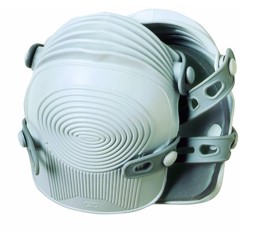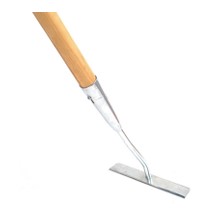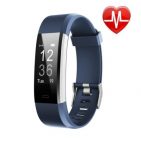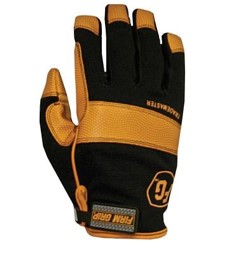by Stan Logan | Mar 19, 2020 | Irrigation
Now here’s a system that you may wish to consider. I’ve used rain barrels for almost 40 years—not because I was trying to conserve water—but because Davis city water was so terrible. It was so bad that the City was forced to obtain Sacramento River water. You might have heard that Davis, UCD, and Woodland allocated millions of dollars on a river water project. Our well water was so bad that even if not affected by users, the “clean” water could not be returned to the River. It didn’t meet new environmental standards.
Gardeners depended on the winter rains to push those toxic minerals down through the soil. But if you had a planting area beneath eaves, or you had indoor plants, you had a problem. So we used rain rain water from barrels for a long time to flush this soil.
Lately though, I’ve been using rain barrels to divert water run-off from the roof from areas I don’t want water to areas that I do want extra water—specifically to the drip line of a huge hackberry tree, pine tree, and several citrus trees. If a water diversion plan appeals to you, here is what you might consider doing:
- Remove a down spout. Cut off 18” from the top of the removed section. Slip that short section back into place.
- Purchase a thin 8 foot plastic down spout extender. I bought mine at Ace Hardware. They are available at Amazon Prime for about $7.
- Attach the end of the flexible tube not containing holes to the 18” section.
- Cut another 18” off of the original removed downspout. Attach this piece to the end of the flexible tube that is hanging down. The piece of downspout that you just attached will simply serve as a weight to keep the plastic tube in whatever barrel or container you place it. You may wish to cut off a section of the plastic tube. My downspout extender does not reach the ground. Don’t worry about the little holes punched in the side of the plastic tube—water loss will be minimal.
- Now you have a down spout extender that can be moved from barrel to barrel or to a wheelbarrow—whatever
Now if you want to get fancy:
- Drill a hole in the bottom of the side of your barrel or garbage can and buy a PVC fitting that create an attachment for a hose. Now you can lead the rain water where ever you want. By adding a section of tubing like old soaker hose with holes drilled in it, you can disperse the water along a planting bed protected by an eave, or where trees need to be deep watered.
- Not fancy, but plug the other down spouts that are on that same gutter (a rolled up sock works well). Make sure that your gutter can bear the weight of being full.
- Have some kind of cover for your containers. We use an extra large size leaf bag.
Realize that your water containers are going to remain in place for a long time. Elevation is also a consideration. Gravity feed will not lead water to higher levels of your landscape, but a sump pump would.
Well, that’s the system I’ve used. You might consider creating your own system not soley just to conserve water, but to transfer rain water from where you don’t want it to where you do want it.
If you are still interested, google “rain barrels” and you will find a tremendous variety of productrs that are available.
Stan, The Tool (or Device) Man

by Stan Logan | Mar 19, 2020 | Garden tools

Knee Pads
It seems unavoidable that some gardening activities are going to be done on your knees. But you really should never kneel on a hard surface without using some sort of cushioning. Kneeling pads are useful, but if you want to be efficient and look professional, get a pair of knee pads.
I have been known to look professional all day long during gardening season. I have also looked particularly professional when walking around the neighborhood with knee pads, or especially when napping in my recliner.
I have 2 pairs of knee pads—one for inside the house, and one for outside. The outside pair sometimes gets grit stuck to them and that can cause damage to hardwood floors as you move around. (You do clean the condensing coils beneath your refrigerator, don’t you?)
There are numerous knee pad styles. I prefer a style that has a foam pad inside a harder rubber outer cover. This is the style shown below. I have seen these knee pads sold at Home Depot, and they are available for $23.71 at Amazon Prime.
The main consideration in choosing knee pads is the comfort of the securing straps. Unfortunately there is no trial program for testing knee pads. I suppose you could strap on a pair and crawl down the aisle of your local big box or garden store, but I’m afraid that would not look professional. Those of you who garden in shorts may be particularly handicapped trying to find a comfortable set. Be persistent in your search. Soon you find that you too will be eating meals and napping in your knee pads.
Stan, The (professional looking) Tool Man

by Stan Logan | Mar 19, 2020 | Garden tools

Colinear Hoe
If you are using a drip system with a lot of plastic tubes spread across your garden, you know full well how difficult it is to weed around these lines. The best answer to your weeding needs is a collinear hoe. This is a long handled hoe with a rectangular blade at the end. The blade is narrow—about 1 inch and the width can vary from 7 inches to less than 4 inches. It is called collinear because the cutting edge is at the same point directly in line with the long handle. What this means is that when your blade encounters a weed and meets resistance, there is less torque or twisting force exerted on the handle. The main advantage though is that you can slip the thin blade under drip lines or soaker hoses where weeds frequently reside. Then too, since the blade is thin, there is very little disturbance of the soil. I would describe this as a hoe that you would use in more delicate situations. It is not effective in areas where you have allowed weeds to develop thick roots. If you watch the videos online demonstrating hoe use, you’ll see that they are working in rather tight areas around delicate plants like lettuce, and that the weeds are rather small.
If you google “collinear hoe”, you’ll readily find it along with videos on how to use it. You have a choice of blade width and either fixed or replaceable blade models. If you are hoeing in tight quarters, pick a narrower blade. I would opt for the fixed blade because I much rather sharpen a blade rather than order a replacement blade and pay $15. I also think that a fixed blade is easier to clean and has a smoother cutting surface.
There you have it—a weeding tool that can easily slip under drip lines and maneuver in tight planting situations. The collinear hoe costs around $40 and since it’s not on Amazon Prime, you’ll have to pay shipping as well.
Happy hoeing,
Stan, The Tool Man

by Stan Logan | Mar 19, 2020 | Apps

fitness tracker
I was thinking of you today . . . yes, I mean you. I was down on my hands and knees using one of my rectangular 2 x 5” trowels to weed around some drip hose. As I used my trowel, I wondered, as I often do, about the Perennial Club members and whether or not they have purchased the particular tool I’m using. Moments later I’m using my thinning pruners to cut off oak tree seedlings beneath the soil surface. The jays will plant acorns right in among iris rhizomes so I need a slender, long nosed pruner to extricate the seedling. So, I was thinking of you today. (It doesn’t bother me if you weren’t thinking of me.)
Now to the matter at hand . . . or really, at wrist. The tool I want to talk about is the fitness tracker. In its simplest form it is a electronic device that is worn as a bracelet. The tracker sends messages to your computer (when closer than 20 feet) or to your smart phone. It records how many steps you take each day. Who cares, you say, and what does this have to do with garden tools? Have you walked out to the garden and realized that you forgot to bring an essential tool (like a thinning pruner). You were probably a little upset with yourself, and you hated every step you had to take to retrieve your tool. When you are wearing a tracker, your whole attitude changes. You say to yourself, “I’m just getting more steps.” I know it probably sounds stupid, but it really does improve how you feel about yourself. And, of course, the whole premise of counting your steps is to encourage you to be more active, and therefore to be more healthy. Let me caution you, however. You have to temper your enthusiasm for this new program. Both LaVille and I enjoyed walking so much in the first couple of weeks (around the neighborhood and along bike paths) that we got sore feet. Now we are more moderate in our forays around Davis. But after several years of monitoring our steps, the additional exercise has made us healthier. That is what I wish for you, and the fitness tracker is a tool to help you achieve this.
But wait . . . there’s more. Many of the tracker systems allow you to create a friends group that lets you to keep track of how others are doing. You can compete with others if you need extra motivation. I tend to be this way while LaVille simply enjoys setting personal goals and competing with herself. Once again, I caution you to take it easy at first.
But wait . . . there’s even more. This device keeps track of your sleep pattern. Once again, I can hear you say, “Who cares!” The amount of sleep you get is as important as how much you exercise. You can see the number of hours of sleep you get nightly, when you went to the bathroom, and when you were restless. When you pay attention to your sleep pattern, you will work at getting better sleep.
I have just barely touched on all that the fitness tracker programs have to offer. There are many different brands and models of trackers. Check out fitness trackers on Amazon. Read the reviews. I think you will be impressed. I know that most of you need no motivation to be active. But just knowing that retracing your steps to get that forgotten tool is making you physically healthier will make you a mentally healthier person as well.
Just thinking of you,
Stan, The Tool Man

by Stan Logan | Mar 19, 2020 | Garden tools
The thought of needing gloves can bring on a feeling of dread. If I need gloves, the task at hand is probably strenuous. Now, strenuous tasks were no problem when I was young. I worked my way through college working for my dad as a laborer in construction. In those days we would wear those loose gloves with a collar-like top. In my 30’s and 40’s I moved up to the heavy leather gloves that used to be sold in a 2-pack at Costco for $20. Now in my 70’s I have no use for heavy gloves. If the task is so hard that it requires heavy gloves, I’ll pay someone else to do the work. Now the gloves I wear are designed not to prevent blisters, but mainly to just keep my hands clean. Protection against slivers, pokes, and scratches is an added plus.
There is a whole slew of different gloves that will keep your hands clean and protect them from minor physical trauma. Go to the glove display at Home Depot or Lowes. There you will find an absolutely amazing variety of gloves hanging on hooks. You can try on the different designs and sizes to find out what is most comfortable. If color coordination is important to you, have at it. Make sure that you buy a pair that has a Velcro closer or a tight elastic top—there’s nothing more irritating than working with gloves containing dirt or garden debris. Try both gloves on before you buy—both must be comfortable. One of the gloves I bought recently had a pokey seam that I had to trim. Now, the gloves I wear are not waterproof, and I don’t think you’d enjoy gardening with sweaty hands inside gloves anyway. Nor will these gloves protect you from the thorns of roses, citrus, pomegranate, flowering quince, and the like. But using these thin, comfortable gloves will keep dirt out from under your fingernails and protect your skin against minor dings and abrasions. And guess what—they’re washable. Just throw them into the washer with the rest of your soiled garden work clothes and they’ll be as good as new (or at least as good that get-up you wear in the garden)
Just thinking of your hands,
Stan, The Tool Man



